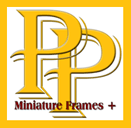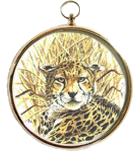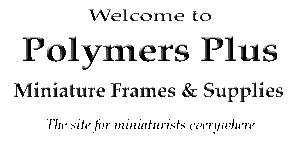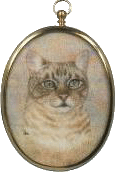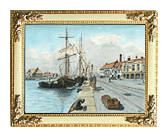Mammoth Ivory
Elephant ivory has been used as the base upon which to paint miniatures since the early 1700's. The Venetian artist Rosalba Carriera is reported to be the first to use this material in 1705 instead of Vellum which, at that time, was considered to be the preferred material. The use of ivory was taken up in England by Bernard Lens within a couple of years, and by the middle of the century, the technique of cutting thinner sheets had been improved as had the removal of saw marks which, was achieved by scraping. The surface was then given the required 'tooth' by the use of fine abrasives. A degreasing procedure was then required before it could be used. Traditionally this required the use of garlic and vinegar. Since those days. ivory has been a much favoured base for miniatures, particularly portraits.
In 1977 the Convention on International Trade in Endangered Species was successful in banning the slaughter of Elephants for their tusks and any ivory that has been available has had to be certified as having been legally obtained prior to 1946. The time is rapidly approaching when there will no longer be any of this material available. Fortunately there is an alternative available that is almost indistinguishable from Elephant ivory. This is Mammoth ivory.
Before dealing with the ivory itself, a few facts about Mammoths seems to be in order. It is understood that the Mammoth originated in Africa about 50 million years ago, which was about 10 million years after the dinosaurs had become extinct and, whilst the elephant bears a resemblance to the mammoth it is not a direct descendant and did not evolve until about 10 million years ago. The mammoth spread throughout Europe, Asia and America. At that time America and Russia were joined at Alaska, and there is considerable evidence of the existence of mammoths in England. By the end of the last ice age, 10 thousand years ago, the mammoths that were in the Northern hemisphere had developed into what we now know as the wooly mammoth. At this time man was already 'on the scene' and there is evidence to suggest that he hunted mammoths and used their bones and tusks for a number of purposes including providing a framework for their dwellings.
The wooly mammoth is our source of Mammoth ivory, the majority of which comes from Siberia where it has been permanently deep frozen for the last 10,000 years. These mammoths 'come to light' in this sparsely populated area during their brief summers when the permafrost softens or perhaps when erosion occurs. There are a number of expeditions that annually search for mammoths and it is not uncommon for 2 tons of ivory to be uncovered during a season. The wooly mammoth was an imposing animal standing about 12 feet high and weighing about 10 tons, it's tusks could be 15 feet long and weigh 150lbs each. Much of the ivory that is recovered is required for scientific examination. That which is released for commercial use might be in the form of complete tusks or odd pieces. It has to be cut into manageable sized pieces and the outer surface has to be removed as well as any areas that are damaged. It is then sliced into thin sheets and only the best is selected for use as a painting blank. This then has to undergo other processes to prepare it for despatch to the artist in a ready to use condition. During this painstaking selection process a large amount is rejected some of which can be used for the manufacture and restoration of what we know as piano key frames whilst other small pieces can be used in jewellery manufacture. Despite this as much as 70% cannot be used!
Painting on ivory does not require any special techniques, my personal opinion is that only watercolour should be used so that the natural translucent glow of the ivory can be exploited. The storage of ivory prior to painting is not complicated. It should be kept in reasonably constant conditions of temperature and humidity, away from bright light and preferably protected by tissue paper or similar and under a slight weight such as a book. Mammoth ivory is available in a restricted range of standard sizes in rectangular or elliptical shapes. Special sizes can be produced but they would be cut from standard sheets and would incur a surcharge of about £3.00 over the cost of the sheet. Prior to painting you will see that both sides are almost identical in respect to their surface texture, however you will note that there is a very small cross in pencil on one side. This indicates that you should paint on the other side.
